

The Gryphon:Legend and Myth
© SunBlind 2007
Please do not use this text without my permission. [see footnote below]
If you find any errors or omission, please drop me a note to let me know!



In 1700 B.C. the gryphon has been found depicted fighting bulls and lions in King Minos' palace Knossos. Unlike the previous gryphons, this one does not bear a crest or feathered ears upon it's head, instead it has a kind of curling mane. Nor does it have wings, instead it has snake components. The following image is from the famous gryphon fresco, where a gryphon resides on either side of the throne.
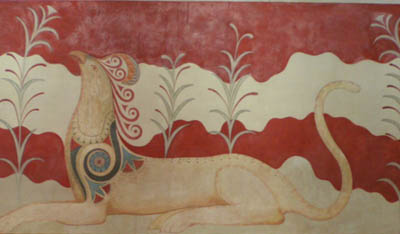
Here is another example.
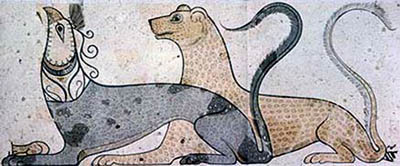
The gryphon had both religious and heraldic meanings in Minoan culture. In their beliefs, the gryphons are the followers of Britomartis, the Mistress of the Wild Animals, as were all other creatures. The gryphon, however, had an additional job as guardian. Britomartis has been depicted on a relief seal with a gryphon suckling from one of her breasts. In another representation, she is shown with a galloping gryphon. The Mycenians adopted the symbolism of the gryphon and depicted the Mistress in a similar manner.


Hittite gryphons are represented seated calmly, as if guarding.
[Unfortunately I was unable to find any more information about this variation on the legend]


Took over the land once lived on by the Hittites, a region in the Anatolian Highland (Turkey), around 1200 BC and were eventually absorbed by the Persian Empire. Once again I found little information on the significance of the gryphon to the Phrygians, but I suspect seeing they were sandwiched between the Hittites and the Persians, it is not suprising to find gryphons depicted in their artwork.
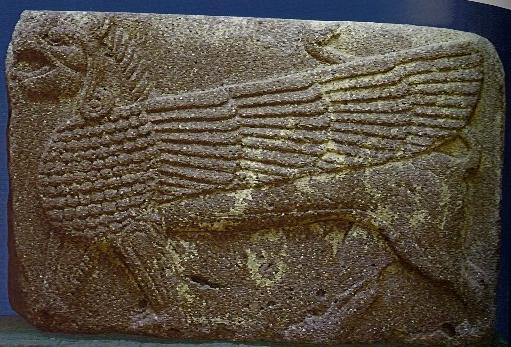


The Persian gryphon can be represented with either an eagle head, as well as a lion head and was known as a Homa. The more commonly depicted female has the feathered wings of an eagle while the rarely depicted male has spikes instead of wings. Because of the frequency with which the gryphon was depicted in Persian art, they became a symbol of ancient Persian to the Jews.
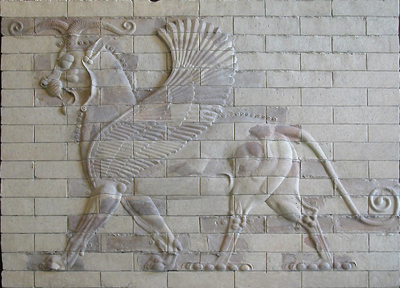
In the Persion religion of Zorastrianism, it was common to see depictions of two gryphons drinking from a flaming cup. Later, the Crusaders would be reminded of the Eucharist and the cup of fire became associated with the Holy Grail.

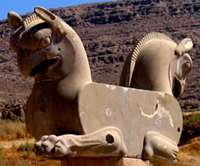 Particularly during the Achaemenid dynasty, gryphons were used widely as statues and symbols in palaces. They also had a special place in Persian literature as guardians of light.
Particularly during the Achaemenid dynasty, gryphons were used widely as statues and symbols in palaces. They also had a special place in Persian literature as guardians of light.
The image to the right is of a large gryphon statue at Persepolis, the ancient Persian empire capital city.
In Iranian legends, Homa would fly and then land on the head or shoulder of a king-elect upon death of a king, although this is sometimes attributed to the other Persian mythological bird Huma.
(SunBlind's comment - I suspect the legend must refer to the bird, I can't imagine having a gryphon land on my head seeing as they are significantly larger than I am!)
The Homa is now used as the symbol of Iran Air.


Footnote I just want to clear up when you actually need my permission to use this information. What I generally don't want is for you to simply copy this page and stick it up on your own website without asking me first, especially if you claim to have written it yourself. If you are using it for a school project, that's fine, you don't need to ask me first. Depending on your grade level, you'll know how your teacher wants you to reference the information to avoid plagirism.


| 






